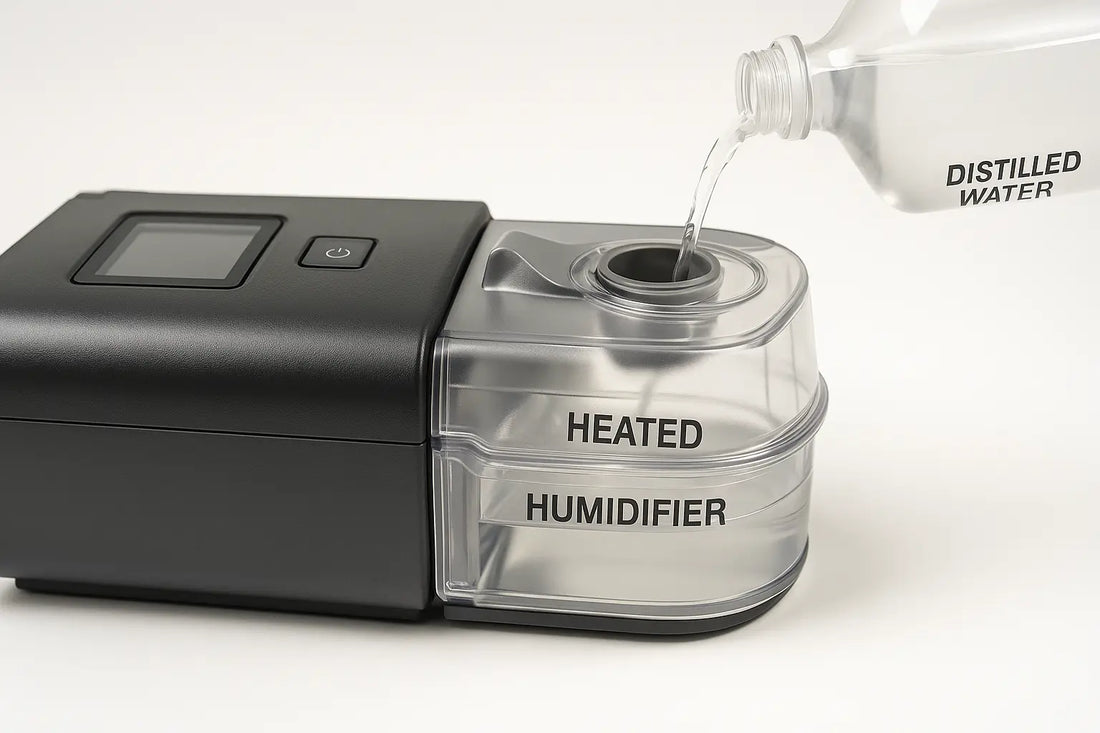CPAP Humidification – Why It Matters for Comfort and Compliance
Many CPAP users experience dryness, nasal congestion, or sore throat during therapy — but the solution is often simple: CPAP humidification. By adding moisture to the pressurised air, humidification makes breathing more natural and comfortable, helping patients stick to their therapy in the long term.
Proper CPAP humidification doesn’t just enhance comfort; it also improves compliance, reduces airway irritation, and promotes better sleep quality.

How CPAP Humidification Works
Most modern CPAP machines include a heated humidifier that adds moisture to the airflow before it enters your mask. The water chamber gently warms distilled water, transforming it into a fine mist that mixes with the air. This helps prevent dryness in your nose, mouth, and throat — common side effects of continuous airflow.
Devices like the ResMed AirSense 10 and AirSense 11 offer adjustable humidity levels, allowing you to tailor your comfort according to your room temperature and personal preferences. Effective CPAP humidification ensures smoother therapy sessions, particularly in dry or cold environments.
Benefits of Using CPAP Humidification
Incorporating CPAP humidification into your therapy brings multiple advantages:
-
Improved comfort: Reduces dryness, sore throat, and mouth irritation.
-
Better compliance: Enhances the likelihood of consistent CPAP use.
-
Reduced congestion: Eases nasal blockage and sinus pressure.
-
Customisable control: Many devices allow adjustment of both temperature and humidity.
For those who previously found CPAP therapy uncomfortable, humidification can be a game-changer that transforms your experience from frustrating to sustainable.
Practical Tips for CPAP Humidification Care
Maintaining your humidifier properly ensures safe and effective therapy:
-
Always use distilled water to avoid mineral deposits or residue.
-
Empty and clean the water chamber daily to prevent bacterial or mould growth.
-
Allow all components to air dry fully before reassembling.
-
Replace the humidifier chamber every six months, or as directed by your manufacturer.
Avoid using tap water or strong detergents, which can damage components or create limescale buildup over time.

Conclusion – The Importance of CPAP Humidification
Effective CPAP humidification enhances comfort, prevents dryness, and encourages better therapy compliance — all key to long-term success in treating obstructive sleep apnoea. By using distilled water, cleaning your humidifier regularly, and adjusting settings to your comfort, you’ll ensure smoother nights and healthier breathing. A small step like humidification can make a big difference in your CPAP journey.

